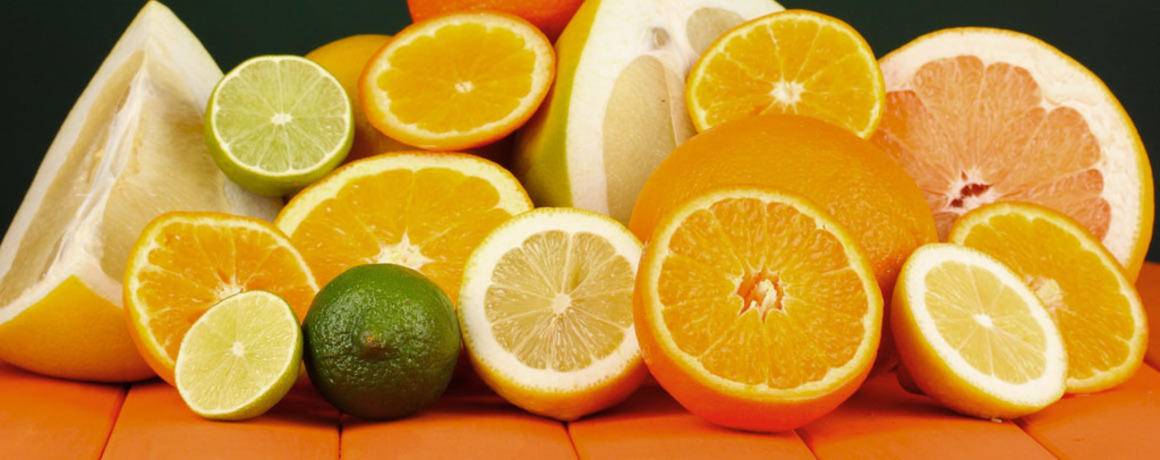


South Africa's lemon production is expected to grow by 10 per cent in the 2023/24 season, while tangerine/citrus production will increase by 4 per cent, according to the South African Citrus Annual Report recently released by the United States Department of Agriculture (USDA). Production of the remaining citrus categories will decline slightly, with grapefruit down 5% and oranges down 1%. This is mainly due to a reduction in acreage and producers being less optimistic about the outlook for these categories. The total area under citrus cultivation in South Africa has declined by 1 per cent from 97,550 hectares in the 2020/21 season to 96,277 hectares in the 2021/22 season due to problems with logistics, input costs, and erratic power supply.
The area planted to oranges in South Africa peaked in the 2020/21 season and has since declined, with a 0.5 per cent reduction in the area under orange production expected in the 2023/24 season. In the orange-growing areas of the Western Cape and Limpopo provinces, a significant shift of fruit growers to tangerine/citrus has impacted on the growth of orange acreage.
Despite heavy rainfall in the Western Cape in June at the peak of the season, harvesting for the season was mostly complete and had a limited impact on production.20 With adequate rainfall in the main orange growing areas in the 2022/23 season and many orange trees at peak fruit production, production is expected to increase by 1 per cent. based on a 1 per cent decline in harvested area, orange production is estimated to decline by 1 per cent in the 2023/24 season. Overall, sufficient irrigation water in the main orange-producing areas will help to maintain the relatively high yields of the last two production seasons.
Exports of fresh oranges are expected to grow by 3 per cent in the 2022/23 season and by 2 per cent in the 2023/24 season, as a weaker South African rand favours exports, along with an increase in exportable orange production. Large quantities of oranges available for export and lower transport costs should lead to stronger growth. However, industry insiders assert that conditions at the ports of Durban and Cape Town are worse than last year and pose a threat to the upcoming new season. Because of the distress caused to several export industries, the Port of Cape Town is ranked 344th out of 347 ports and the Port of Durban 341st in the 2022 World Bank Container Port Performance Index Report. The Port of Cape Town, in particular, has suffered from the failure of the gantry cranes that load and unload ships, leading to increased congestion.
South Africa's fresh orange exports to China grew by 33% to 96,892 tonnes in the 2021/22 season, making China its third largest overseas market. Exports from the Mozambican port of Maputo from 2021 are a breakthrough for South Africa's citrus industry, reducing transit times and costs to China. A large amount of South Africa's oranges are produced in the north-east, which is much closer to Maputo than to the port of Durban, which has become the gateway for South Africa's citrus to markets in Asia and the Middle East. Due to the numerous challenges and congestion at the port of Durban, a higher proportion of South African oranges are expected to be exported via Maputo in the 2023/2024 season.

Fresh grapefruit
Sales of grapefruit budwood are on a downward trend due to producers switching to citrus/oranges, with little increase in new plantings, and the area planted with grapefruit is expected to remain at 8,450 ha in the 2023/24 season. Production is estimated to increase slightly by 1 per cent in the 2022/23 season, benefiting from adequate rainfall in the main production areas. With little growth in harvested area, grapefruit production is forecast to decline by 5 per cent in the 2023/24 season, based on average yield forecasts.
Exports of South African grapefruit fell by 18 per cent year-on-year in the 2021/22 season due to unprofitable exports of certain grades of grapefruit as a result of high agricultural inputs and freight costs. A number of producing regions reduced their exports of Grade 2 fruit packages for domestic processing and consumption in the 2022/23 season, and grapefruit exports are estimated to have declined by a further 8 per cent in the current season. With export volumes recovering in the 2023/24 season, and transport costs returning to normal (not yet back to pre-epidemic levels), and if costs remain at current levels or lower, exports are forecast to grow by 6 per cent to 230,000 tonnes.
China is South Africa's largest export market for grapefruit in the 2021/22 season, accounting for 27% (63,470 tonnes) of its total exports, followed by the Netherlands (27%, 63,408 tonnes), Japan (10%, 22,866 tonnes) and Russia (8%, 19,4269 tonnes). Together, these four countries accounted for more than 70 per cent of South Africa's total grapefruit exports last year.

Fresh oranges/citrus
The rapid growth in South Africa's orange/citrus acreage has slowed to an estimated 1% increase in the 2022/23 season and a 2% increase in the 2023/24 season. The global demand for seedless oranges/tangerines and relatively high profit margins compared to other citrus categories have made them more interesting to farmers, resulting in large plantings, but many growers are beginning to wonder if the market is saturated.
Orange/tangerine production is estimated to surge by 11 per cent in the 2022/23 season and by a further 4 per cent in the 2023/24 season, as new plants begin to produce fruit, along with good rainfall and sufficient irrigation water in the main production areas. More than 40 per cent of South Africa's orange/tangerine acreage is five and less than five years old, so more and more orange/tangerine will reach the market in the coming years.
South Africa exported 520,565 tonnes of oranges/tangerines in the 2021/22 season, an increase of 3 per cent. high yields and more reasonable freight rates in the 2022/23 season are estimated to result in a 15 per cent increase in exports. Exports are expected to grow by a further 5 per cent in the 2023/24 season based on increased production and improved quality. Large quantities of South African oranges/citrus are exported through the Port of Cape Town and the operational status of the port has become a risk factor for exports in the new season. The EU and UK are the largest overseas markets for South African oranges/citrus, accounting for 45 per cent of total exports, followed by the USA (10 per cent), Russia (10 per cent), UAE (8 per cent) and China (4 per cent). China's imports fell by a modest 4% in the 2021/22 season, but have grown rapidly this year, with imports in the first nine months already reaching 30,695 tonnes, up 35% on the same period last year.

Fresh lemons/limes
Growth in South Africa's lemon/lime acreage has slowed, with orchards 5 years old and under accounting for only 14% of the total, while orchards 6 to 10 years old account for 50% of the total. estimated acreage for the 2022/23 season remains unchanged at 17,550 ha, and is projected to fall by 4% to 16,900 ha in the 2023/24 season due to the cessation of production from a number of older trees.
Lemon/lime production in the 2022/23 season is estimated to have declined by 13% compared to the 2021/22 season due to reduced yields in the Eastern Cape as a result of hailstorms during the flowering period. the 2021/22 season saw a large increase in production of 19% due to favourable weather conditions and the start of fruit production from new fruit trees. Production is expected to increase by 10 per cent in the 2023/24 season due to adequate irrigation water and increased inputs of fertilizers and pesticides.
South African lemon/lime exports are estimated to increase by 3 per cent in the 2022/23 season and grow by a further 12 per cent in the 2023/24 season to reach record levels, benefiting from an increase in export-grade fruit. Continued growth in demand will drive continued growth in exports to the Middle East, UK, EU and Asia. South African fresh lemon/lime exports to China reached 9,325 tonnes in the 2021/22 season, up 1202% since August 2021, when China relaxed its cold treatment requirements. From January to September this year, South African exports to China have reached 10,300 tonnes, up 16% on the same period last year.
Need help or have a question?
Send mail